This post was written by Robert Hacker ’18
Do you ever find yourself enjoying a glass of water, a meal, or maybe even breathing fresh air?
 If you answered yes to any of the three activities above, then you may want to thank ecosystem services.
If you answered yes to any of the three activities above, then you may want to thank ecosystem services.
A service is the action of helping or doing work for someone.
An ecosystem is a community of interacting organisms and their environment.
Therefore, an ecosystem service can be described as a community of interacting organisms and their environment that helps to get work done. There are four categories of ecosystem services which are provisioning, regulating, cultural, and supporting services.
I will begin by explaining provisioning services. These services provide a benefit that humans extract from nature such as water, timber, fossil fuels, food and medicine. All of the provisioning services are essential for the survival of human populations and will see negative impacts as a result of climate change.
Next, regulating services provide benefits as a result of an ecosystem process that moderates a natural phenomenon. Some examples are water filtration/purification, pollination, decomposition and carbon storage. Humans have been altering the rates at which these ecosystems are able to operate, therefore increasing the rate of climate change and natural resource depletion.
Third, cultural services are non-material benefits that contribute to the development of people. Some examples include nature-based art, tourism, and recreation. Many indigenous communities have lost these services due to environmental degradation, or development of their once sacred land. Also threatened are many of the outdoor activities all people enjoy such as hiking, swimming or even skiing!
The final type of ecosystem services is supporting services and are classified as a benefit from an ecosystem process that moderates a natural phenomenon. These are arguably the most important because all life could not survive with-out them. Supporting services include photosynthesis, nutrient cycling and soil formation. The second two along with many other services have been altered and degraded since the industrial revolution.
All of these types of services are essential to the survival of human life as we currently know it. Climate change poses a threat to these important services that humans and all other species depend on. We need to begin to take care of our home, Earth!
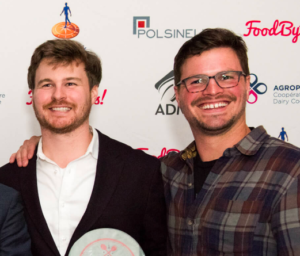 Sap! was co-founded by The Sustainable Innovation MBA alumnus Chas Smith ’15 (left, in photo) and has been on a hot-streak in 2018, appearing on the ABC pitch show “Shark Tank” and being named a product trend to watch by Whole Foods Market.
Sap! was co-founded by The Sustainable Innovation MBA alumnus Chas Smith ’15 (left, in photo) and has been on a hot-streak in 2018, appearing on the ABC pitch show “Shark Tank” and being named a product trend to watch by Whole Foods Market.
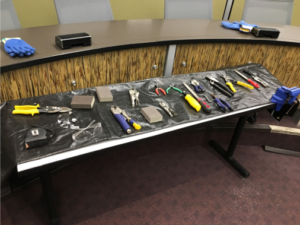 Against the auditorium style seating a table was set up and laid out with what could be confused as the tools from
Against the auditorium style seating a table was set up and laid out with what could be confused as the tools from 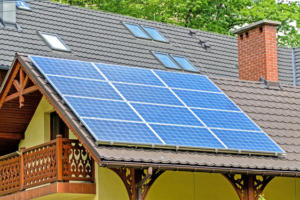 In 2 years, all new homes built in the state will be mandated to either have solar panels installed or be hooked up to shared solar panels that power a grouping of the new homes. New home buyers will have the option to purchase the panels outright where they are included in the price of the home or can be leased. The increasing amount of solar energy to be included in the energy mix is sure to help achieve the state’s aforementioned energy goals, but the requirement for new home owners to purchase rooftop solar has the potential to surface unintended consequences.
In 2 years, all new homes built in the state will be mandated to either have solar panels installed or be hooked up to shared solar panels that power a grouping of the new homes. New home buyers will have the option to purchase the panels outright where they are included in the price of the home or can be leased. The increasing amount of solar energy to be included in the energy mix is sure to help achieve the state’s aforementioned energy goals, but the requirement for new home owners to purchase rooftop solar has the potential to surface unintended consequences.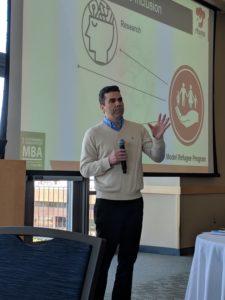
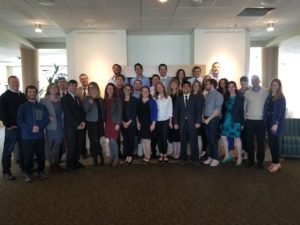 Students pitched scoping for projects at companies such as Keurig Green Mountain, Griffith Foods, Essilor, Seventh Generation, and Caterpillar.
Students pitched scoping for projects at companies such as Keurig Green Mountain, Griffith Foods, Essilor, Seventh Generation, and Caterpillar.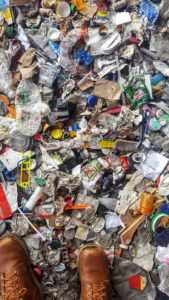 If you are like a lot of people you probably don’t, and you hope or wish that the items you put in the bin get recycled. But this “wishcycling” can actually do more harm than just throwing contaminated or non-recyclable items away. On a recent site visit to
If you are like a lot of people you probably don’t, and you hope or wish that the items you put in the bin get recycled. But this “wishcycling” can actually do more harm than just throwing contaminated or non-recyclable items away. On a recent site visit to 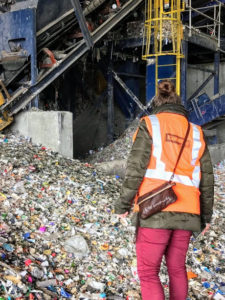 When non-recyclable items don’t make it through the system they are sent to the landfill or to an incinerator. This includes all of those small plastics, random pieces of metal, plastic bags, and more. This is why it is really important to check with your local recycler to see what products they take in the blue bin and which have special instructions.
When non-recyclable items don’t make it through the system they are sent to the landfill or to an incinerator. This includes all of those small plastics, random pieces of metal, plastic bags, and more. This is why it is really important to check with your local recycler to see what products they take in the blue bin and which have special instructions. Mike Dupee, Lecturer in The Sustainable Innovation MBA program and a Certified Biomimicry Professional, introduced us to biomimicry, which is the innovation approach centered on the “conscious emulation of nature’s genius.” As humans strive towards innovation – doing things faster, better, more creatively, and at lower cost – looking more closely at the natural world around us shows that this is one of the oldest processes on the planet. The plants, animals, and microbes that have survived the 3.8 billion years of our planet are the ultimate innovators and as businesses seek to solve problems and develop new strategies, there is much that can be learned from them.
Mike Dupee, Lecturer in The Sustainable Innovation MBA program and a Certified Biomimicry Professional, introduced us to biomimicry, which is the innovation approach centered on the “conscious emulation of nature’s genius.” As humans strive towards innovation – doing things faster, better, more creatively, and at lower cost – looking more closely at the natural world around us shows that this is one of the oldest processes on the planet. The plants, animals, and microbes that have survived the 3.8 billion years of our planet are the ultimate innovators and as businesses seek to solve problems and develop new strategies, there is much that can be learned from them.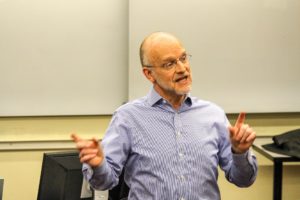 Reed got his start in advocacy and grassroots work in Michigan. He discussed the evolution of his thinking from an “us versus them” mentality (environmentalists versus business) to understanding business’s role in society (and the part that sustainability-minded professionals can play).
Reed got his start in advocacy and grassroots work in Michigan. He discussed the evolution of his thinking from an “us versus them” mentality (environmentalists versus business) to understanding business’s role in society (and the part that sustainability-minded professionals can play). I
I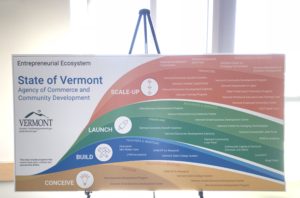 On April 5th, 2018 the University of Vermont hosted the 13th annual Invention2Venture Conference for entrepreneurs, inventors and students alike. The conference focused on how to finance, protect and commercialize inventions, as well as how to thrive in the New England tech world.
On April 5th, 2018 the University of Vermont hosted the 13th annual Invention2Venture Conference for entrepreneurs, inventors and students alike. The conference focused on how to finance, protect and commercialize inventions, as well as how to thrive in the New England tech world. The Tier I ranking by the London-based business publication places UVM’s Sustainable Innovation MBA among the top 116 programs worldwide. It was also listed among the top 71 Top Tier programs in North America, with both rankings focusing on programs that combine exceptional quality with great return on investment.
The Tier I ranking by the London-based business publication places UVM’s Sustainable Innovation MBA among the top 116 programs worldwide. It was also listed among the top 71 Top Tier programs in North America, with both rankings focusing on programs that combine exceptional quality with great return on investment.